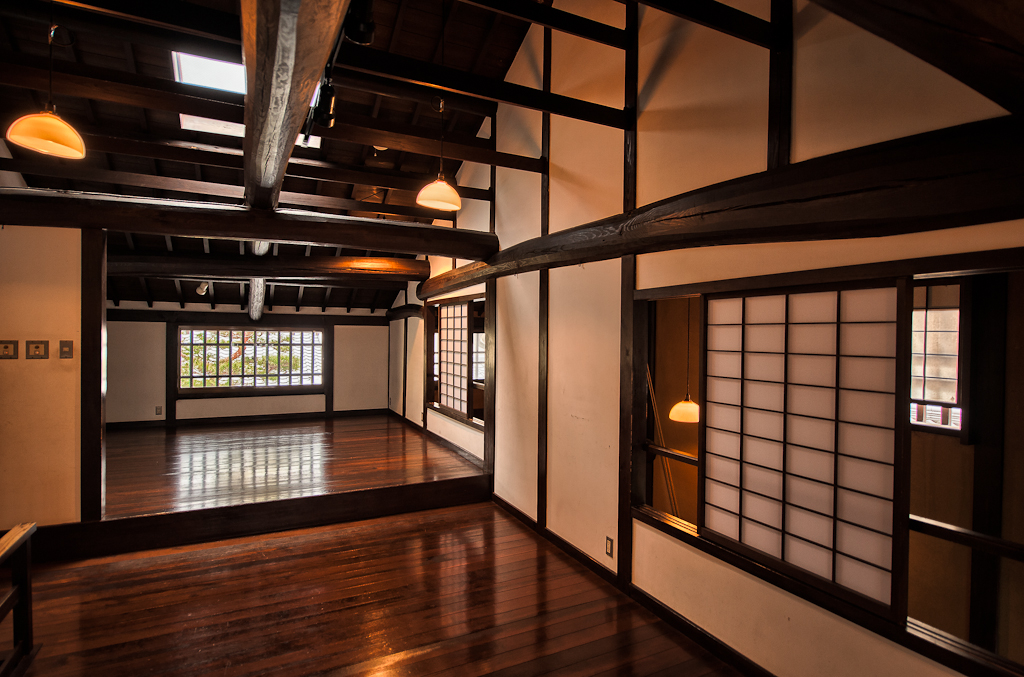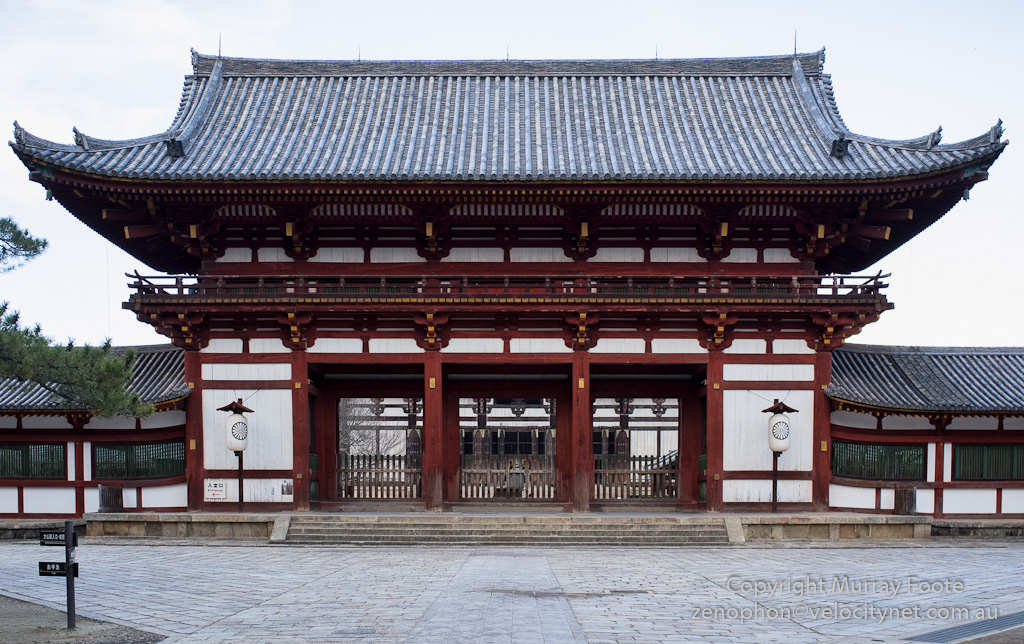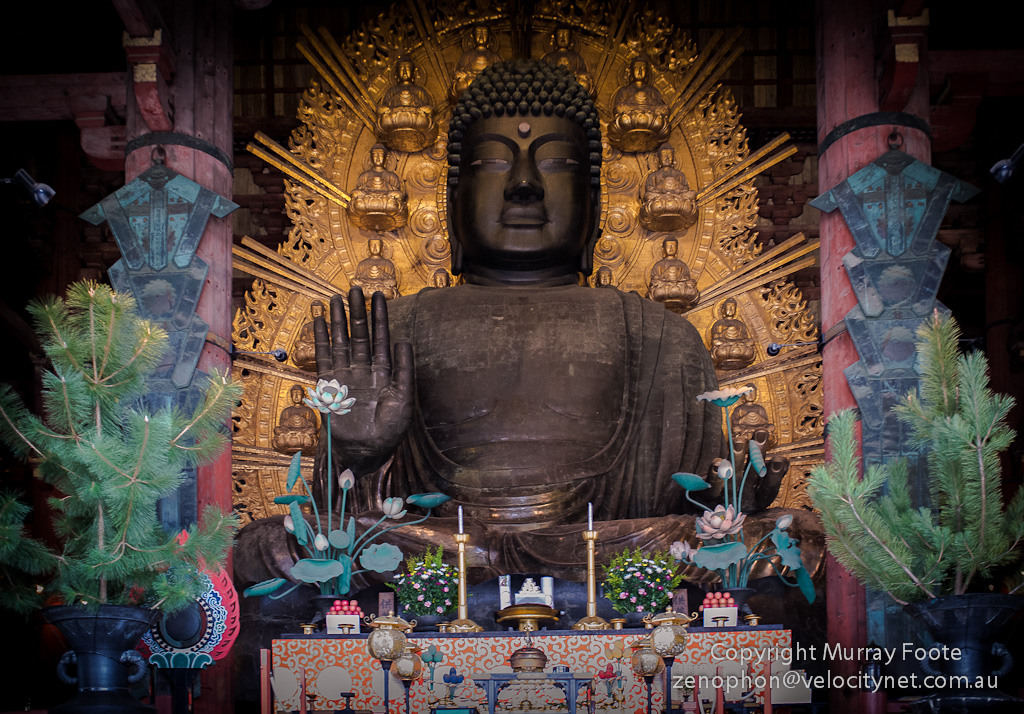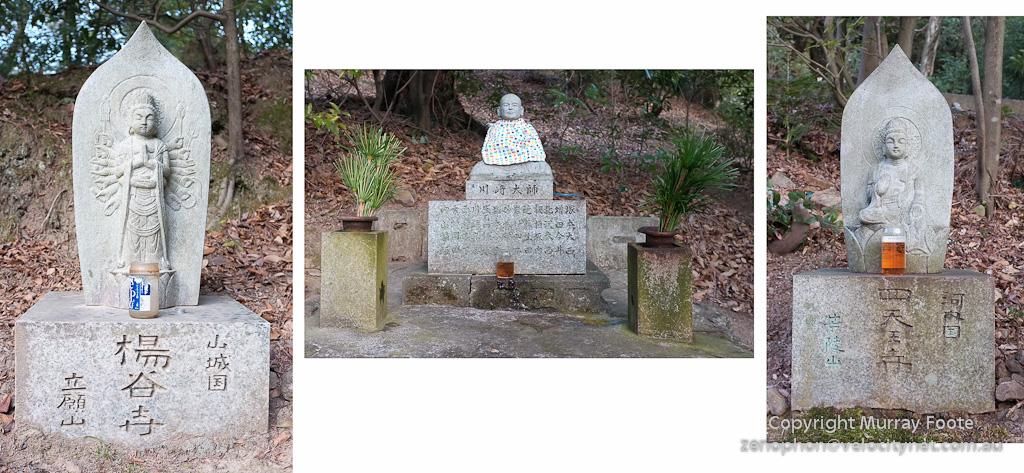This was my first morning in Nara, staying at the very welcoming Sakuraya Guesthouse, in the old quarter of town. Nara was the first capital of Japan, before Kyoto, for nearly 100 years.
I couldn’t resist photographing this vehicle near where I was staying which is actually a utility or ute (it has a tray at the back). The spare wheel cover refers to a car called a Midget that was popular in the 1960s yet it is clearly not the MG Midget, one of which I drove for sixteen years, until relatively recently. It does, though demonstrate the prominence of small vehicles in Japan, where parking space is very much at a premium in many urban areas.
This is Nara-machi Koshi-no-ie, a machiya or urban townhouse of old Nara’s local merchants or artisans, just round the corner from where I was staying. The long, narrow shape is partly for privacy and partly because land taxes were assessed on the width of the house’s facade. Perhaps part of the reason it looks so immaculate is that it is a relatively recent reconstruction.
This is Nanendo, the South Octagonal Hall, originally built in 813 though the current building is a reconstruction from 1741. It is primarily dedicated to Fukukensaku Kannon, the bosatsu of the “Unfailing Fishing Line”, who uses a metaphysical fishing line to catch and assist people who are suffering. A bosatsu or bodhisattva is said to be an individual who attains a buddha-like state that they dedicate to the benefit of all humanity.
The person we see is ringing the gong using the red cord as part of a ritual. This also involves bowing with the hands in prayer position and may involve a few hand claps (my memory is uncertain).
The Goju-no-to or Five Storied Pagoda was originally built in 725 by the Empress Komyoh (consort of the Emperor Shomu). Destroyed by fire multiple times, the current version dates from 1426. It is the second highest pagoda in Japan at just over 50 metres.
The Goju-no-to and the Nanendo above are both part of the Kofuku-ji temple complex which originally included over 175 buildings, though most were burned to the ground with the eclipsing of the Fujiwara family in the late twelfth century.
There are about 1200 sacred deer in the park at Nara, generally quite tame. They are very keen on the “deer biscuits”.
This is the main gate to the Todai-ji Temple. Though impressive enough, I think it also had a practical military purpose. After all, many of the temples in Nara were burned down in wars. The three entrances include heavy wooden gates which could be closed in times of danger. It has two stories so defenders could sleep above the entrances and fire arrows from the balcony if necessary. The walls on each side of the gate look as though they include vertical slats suitable for firing arrows from.
This is Diabutsuden, the Great Bhudda Hall, part of the Todai-ji Temple complex. It burned down three times and though the original was nearly 50% larger, it is still the largest wooden building in the world. There were also originally two 100-metre high pagodas accompanying it, later destroyed by earthquake. Construction for Todai-ji commenced in 728 under Emperor Shomu and completed in 745.
I include the image above for scale. There is a priest bending over the offering table in front of the buddha and on top of the orange platform.
Diabutsu, the giant Buddha, is over 16 metres tall and was completed in 751. It is said to have used so much bronze that it exhausted the nation’s supply and nearly bankrupted the state. What you see is not the original. It was damaged many times by fire and earthquake and recast.
To the left of the Diabutsu and quite a bit smaller, this is a Nyorin Kannon, a boatsu or bodhisattva equivalent to a goddess of mercy.
This is a wooden statue from the eighteenth century on the porch of the Diabutsuden. Binzuru was said to be a disciple of Bhudda with healing powers. Touching the statue and then the affected part of your body is said to effect a cure.
I presume that these three Buddhist statuettes with offerings in front of them are boatsu or bodhisattva . There were many of these behind the temples in the hills to the West of Nara.
Classical Japan – Nara and Heian-kyo (715-1185)
Japan as a political entity started from an area in the Ise Peninsula, about 50 kilometres east of Nara. This was controlled by the Yamato clan who established themselves as both secular and spiritual leaders and became the Japanese royal dynasty. From about 300AD, the Yamato started to exert influence over neighbouring clans and the period to 650 featured extensive borrowing of military and agricultural technology from Korea and China.
The capital of Japan moved to Nara in 715AD during the reign of the Empress Gemmei. For some time before that, it moved at the beginning of each reign. Buddhism became very important during this period and Gemmei’s son Emperor Shomu established many important temples, especially Todai-ji with the Diabutsu. Todai-ji became the centre of Buddhism in Japan at this time and all priests had to take their ordination here.
In Empress Koken’s second period as empress (749 to 758 and 765 to 770), she formed a close association with the monk Dokyo, probably including a sexual liaison and it appears he sought to succeed her as Emperor. As an aftermath of this and to free himself from the influence of the Buddhist hierarchy, Emperor Kammu moved the capital first to Nagaoka in 784 and then to Heian-kyo (later called Kyoto) in 794.
The political system of the Nara era continued in the Heian era with less influence from the monks, except that after some decades the Fujiwara family usurped power from the emperors. Towards the end of this period, the Fujiwara were first eroded and then displaced by new military strongmen and the centre of administration shifted to Kamakura.
The social structure of the Classical period had some remarkable characteristics. The Taika reforms of the late seventh century requisitioned land from regional landowners to be owned by the State. This was then allocated to members of the aristocracy as shoens. The State still owned the shoens but within the shoens, administrators and cultivators could acquire rights called shiki that could be bought and sold.
The aristocracy centred around the emperor and lived in the capital, first in Nara, later in Heian-kyo. They owned large shoen estates but did not live in them, administer them directly, or perform military functions. They were, say, 5,000 of a population of five million. They had a monopoly on literacy, artistic accomplishments, political power and even religious understanding. They were generally descended from members of the Yamato royal family. With the coming of the Karakura era in 1185, they were displaced by regional military warlords or bushi, still related to the royal family but much more distantly. The wonder is that the system lasted so long.














Just incredible!!
LikeLike
Thanks very much, Aline!
LikeLike
It was amazing when I was there with the lids – did you see the wooden pillar with the hole carved in the base – it is supposed to be the same size as Buddha’s nostril – and good luck if you can get through it.
LikeLike
I read about it but forgot to look for it at the time. I can’t imagine I would have had any hope of fitting through.
LikeLike
I meant kids …. lids is most unkind!
LikeLike
It is a long time. !!
They are those who taught the game of igo in Nara.
Thank you for showing many photographs wonderful at that time
Moreover, I would like to meet you, when coming to Nara.
(Please pardon, although I think that it is an odd sentence since this text is struck using the translation site of PC.)
Then, good-bye
LikeLike
Thank you, Igo. Those were some great games of Go. I will post more photographs within a week, including of Nara. It just hasn’t been possible for a while.
LikeLike
Pingback: Itinerary of Journey to Japan | Murray Foote
Pingback: 3rd February: Nara – Lantern Festival at Kasuga Taisha Shrine | Murray Foote
Pingback: 25th February: Kamakura – Diabutsu | Murray Foote
I love Japan! I will be back to review more of your great pictures and info!
LikeLike
Thanks very much Jenny. Yes, Japan is a wonderful place to travel in, in so many ways.
LikeLike
Hello there, Awesome write-up. It comes with an difficulty and your internet site within traveler, would analyze the following? Internet explorer even now will be the marketplace main in addition to a beneficial component of men and women is going to pass over a person’s wonderful creating just for this challenge.
LikeLike
Thank you very much.
LikeLike